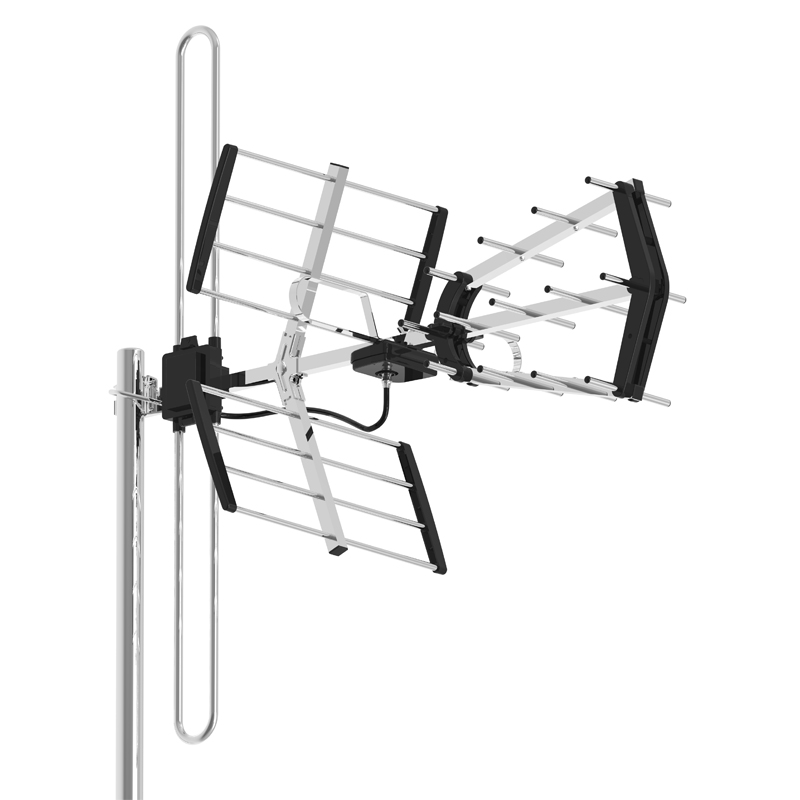Search by posts
Product category
News
 By Admin
By Admin
How to optimize the signal strength and reception quality of digital TV antennas?
Optimizing the signal strength and reception quality of digital TV antennas involves several steps and considerations:
Placement: Optimal antenna placement is critical for achieving the best possible signal reception. Evaluate potential mounting locations, taking into account factors such as elevation, line of sight to broadcast towers, and the presence of obstructions such as trees or buildings. Conduct a site survey to identify the most suitable mounting location, considering both practicality and signal quality. When mounting the antenna, ensure it is securely anchored and properly aligned to maximize signal capture while minimizing wind-induced movement or vibration.
Avoid Interference: Mitigating electromagnetic interference is crucial for maintaining reliable signal reception. Identify potential sources of interference in your vicinity, such as household appliances, electronic devices, or nearby transmission towers. Minimize the proximity of the antenna to such sources, and utilize shielding or filtering techniques where feasible to attenuate unwanted signals. Consider the impact of multipath interference caused by signal reflections from nearby surfaces, and adjust the antenna orientation or placement to minimize its effects.
Use a Signal Amplifier: In scenarios where signal attenuation is a concern, deploying a high-quality signal amplifier can enhance signal strength and compensate for losses incurred during signal distribution. Select an amplifier with appropriate gain characteristics and frequency response to match your antenna system's requirements. Install the amplifier close to the antenna to maximize its effectiveness, and ensure proper grounding to prevent potential signal degradation or electrical hazards. Perform periodic performance evaluations to verify the amplifier's efficacy and adjust its settings as needed to optimize signal quality.
Quality Cables: The selection of high-quality coaxial cables is paramount for maintaining signal integrity throughout the antenna system. Choose cables with low signal attenuation, impedance matching characteristics, and durable construction to minimize signal losses and prevent signal reflections. Opt for cables with appropriate shielding to mitigate electromagnetic interference and ensure reliable transmission in diverse environmental conditions. Regularly inspect cables for signs of wear, damage, or degradation, and replace any compromised components promptly to maintain optimal signal transmission quality.
Grounding: Proper grounding of outdoor antennas is essential to ensure safety and protect against electrical hazards, particularly during inclement weather or electrical storms. Adhere to industry standards and regulatory requirements for antenna grounding, including the installation of grounding rods, conductors, and bonding connections. Ensure that the grounding system provides a low-resistance path to earth, effectively dissipating any induced electrical charges or transient surges. Periodically inspect the grounding infrastructure for signs of corrosion, degradation, or damage, and perform maintenance or repairs as necessary to ensure continued effectiveness.
Adjust and Experiment: Achieving optimal antenna performance often requires iterative adjustment and experimentation to fine-tune the system parameters. Employ systematic optimization techniques such as grid searches, signal strength measurements, or spectral analysis to identify the most favorable antenna configurations. Keep detailed records of adjustments made, signal quality metrics obtained, and environmental conditions observed to facilitate data-driven decision-making and future troubleshooting efforts. Continuously monitor antenna performance and proactively respond to changes in signal conditions or system requirements to maintain optimal reception quality.
VHF and UHF outdoor passiveTV antenna, Dvb-T2HD television antennasa HD-16BJUV
Recommended products
-
Omni directional TV antenna HD-119A
-
High gain amplified antenna HD-118
-
Indoor&outdoor antenna HD-120
-
Paper antenna HD-110
-
Amplified indoor antenna UR-012FA
-
Omnidirectional TV antennas UR-012B
-
Omni directional antenna UR-012C
-
Magnet indoor antenna UR-012D
-
Antenna for rca UR-312
-
HD TV indoor antenna for rca UR-312
-
Small indoor antenna HD-020S
-
HD TV digital indoor antenna RFC-02

 English
English Español
Español











